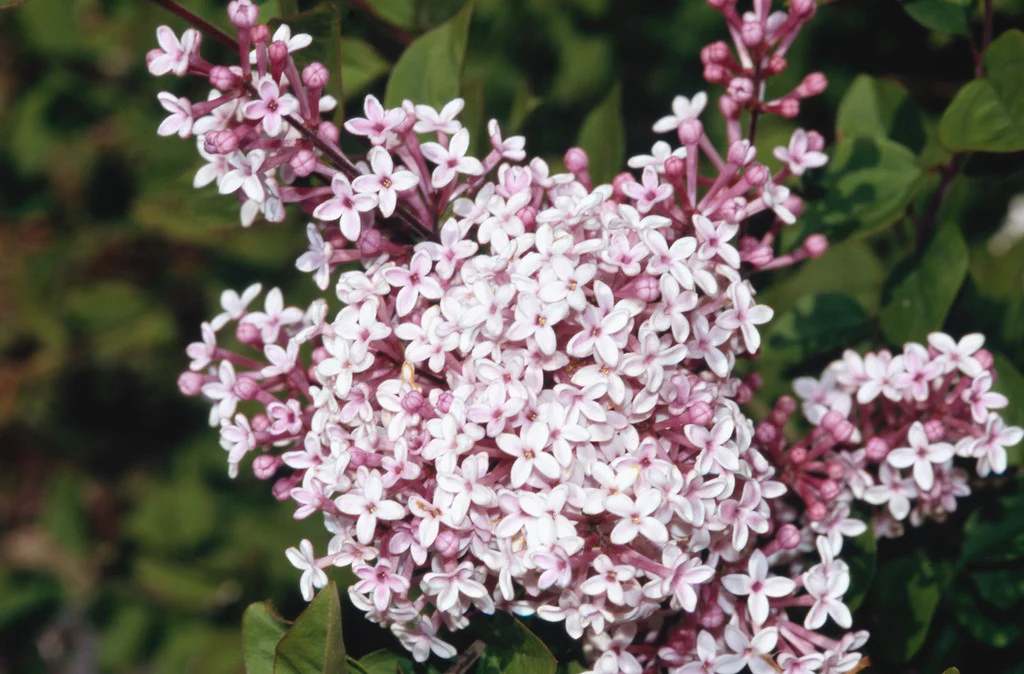Plant Care Expert Guides
Discover the 5 Most Beautiful Reblooming Lilacs to Grow in 2025
Are you dreaming of a garden filled with the sweet fragrance of lilacs all season long instead of just a few short weeks? I used to think lilacs were a one-and-done spring affair until I discovered reblooming varieties that completely transformed my gardening experience. These spectacular shrubs offer not just one, but two (or more!) gorgeous flowering periods throughout the growing season.
In this guide, I’ll introduce you to the five most spectacular reblooming lilacs that deserve a place in your garden in 2025. These exceptional cultivars combine the classic charm of traditional lilacs with modern breeding innovations that extend their flowering season well beyond spring.
Why Choose Reblooming Lilacs?
Before we dive into the specific varieties, let’s talk about why reblooming lilacs are such a game-changer for home gardeners:
-
Extended flowering season: Unlike traditional lilacs that bloom only in spring, reblooming varieties produce a second flush of flowers in summer or early fall
-
Compact growth habit: Many newer varieties are bred to fit perfectly in smaller gardens or container gardens
-
Disease resistance: Modern cultivars offer improved resistance to powdery mildew and other common lilac problems
-
Versatile landscaping options: From hedges to specimen plants, these shrubs work beautifully in multiple garden designs
-
Pollinator-friendly: The extended blooming period provides nectar for butterflies, bees, and hummingbirds for a longer portion of the growing season
I planted my first reblooming lilac five years ago, and the difference has been remarkable. Instead of enjoying lilac blooms for just 2-3 weeks in May, I now have gorgeous, fragrant flowers to enjoy from spring through late summer.
The 5 Most Beautiful Reblooming Lilacs for 2025
1. Bloomerang® Dark Purple (Syringa ‘SMSJBP7’)
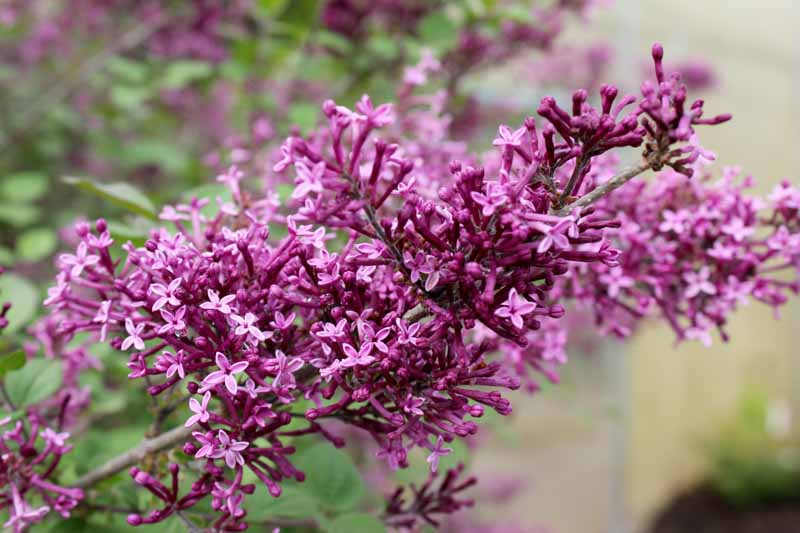
If you’re looking for the gold standard in reblooming lilacs, Bloomerang Dark Purple deserves your attention. As the improved successor to the original Bloomerang lilac, this stunning variety offers:
-
Richer color: Deeper purple blooms than the original Bloomerang
-
Stronger fragrance: Intense sweet scent that carries throughout the garden
-
Larger flower panicles: More substantial bloom clusters for greater visual impact
-
Excellent reblooming: After the spring show, expect flowers from mid-summer until frost
-
Compact size: Mature height of 4-6 feet makes it perfect for smaller spaces
I planted Bloomerang Dark Purple along my front walkway three years ago, and visitors constantly ask about the amazing lilac fragrance—even in July and August when traditional lilacs aren’t blooming. It’s particularly impressive in USDA hardiness zones 3-7.
Pro tip: For the best reblooming performance, lightly prune Bloomerang right after its spring flowering finishes to encourage robust summer blooms.
2. Scentara® Double Blue (Syringa hyacinthiflora ‘SMNSHBBL’)
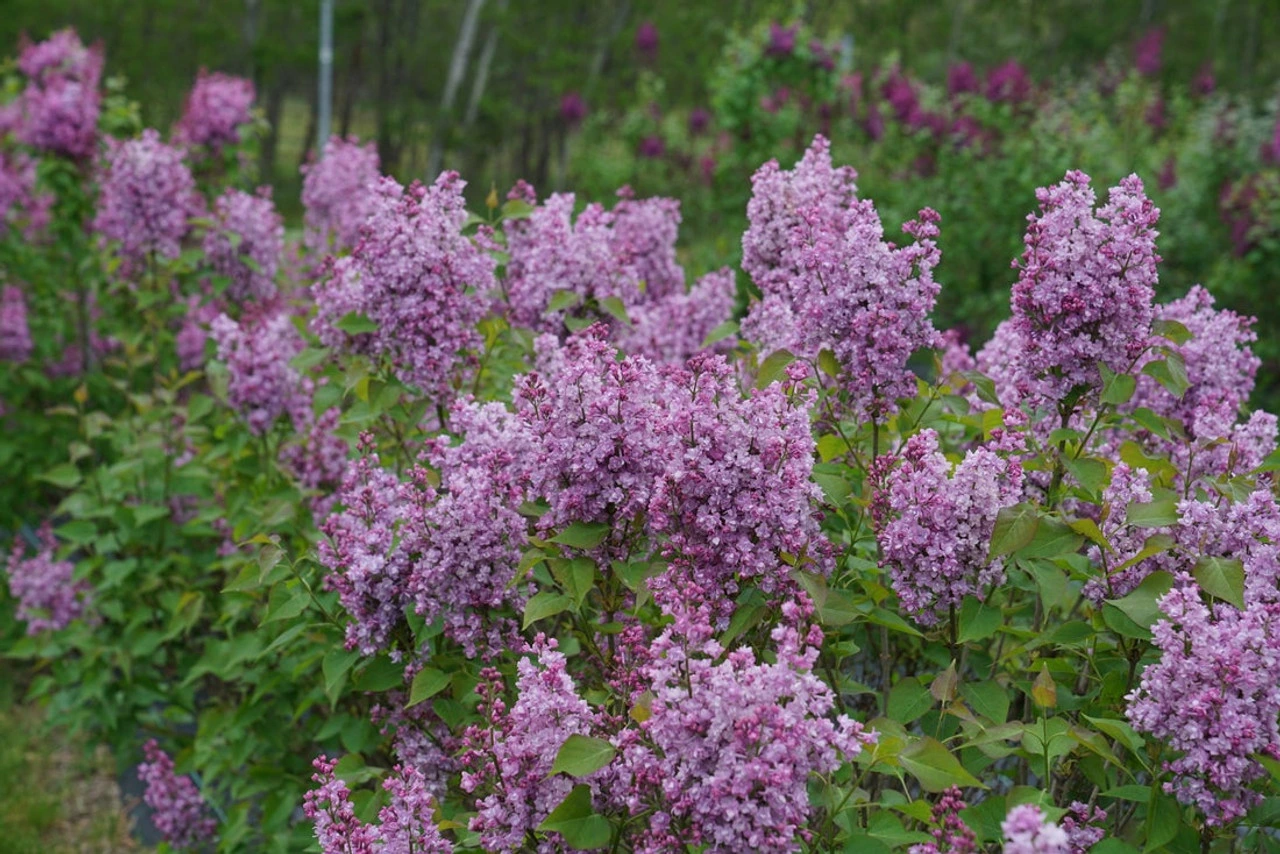
For gardeners who appreciate something truly special, Scentara Double Blue offers a unique twist on reblooming lilacs with its double flowers. This extraordinary variety features:
-
Double-petaled flowers: Luxurious, full blooms reminiscent of tiny roses
-
Sky blue to lavender color: A refreshing hue that stands out in the landscape
-
Exceptional disease resistance: Superior resistance to powdery mildew
-
Compact, rounded form: Reaches 6-8 feet tall and wide at maturity
-
Cold hardiness: Thrives in USDA zones 2-7
What makes Scentara Double Blue particularly valuable is its ability to rebloom while maintaining excellent resistance to powdery mildew, which can be a common problem with many lilac varieties during hot, humid summer conditions.
3. Josee (Syringa ‘Josee’)
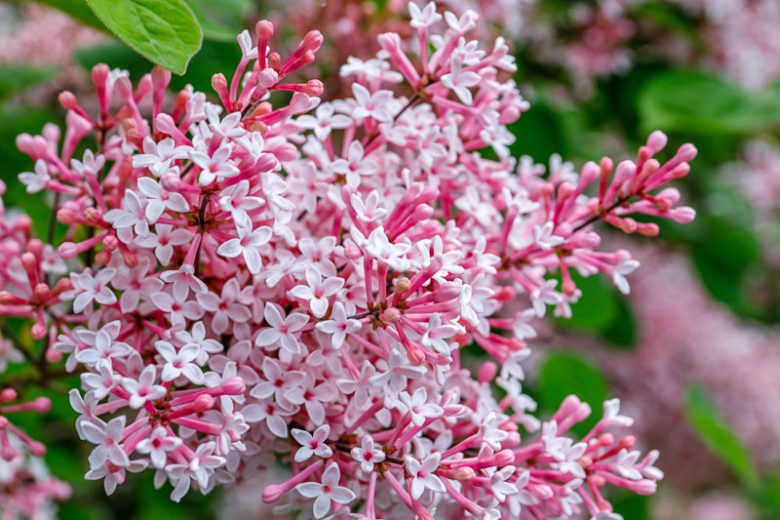
Josee has been around longer than some newer introductions, but it continues to earn its place among the best reblooming lilacs for good reason. This reliable performer offers:
-
Pale pink blooms: Soft, romantic coloration that brightens any garden space
-
Exceptional reblooming capacity: One of the most consistent rebloomers available
-
Petite size: Compact 4-6 foot height makes it perfect for small garden spaces
-
Adaptability: Performs well in a wider range of conditions than many lilacs
-
Low maintenance requirements: Requires minimal pruning to maintain its shape
Garden designer tip: Plant Josee lilac alongside early-summer perennials like salvia or catmint for beautiful color combinations during its second bloom cycle.
4. Scent and Sensibility™ Pink (Syringa x ‘SMSXPM’)
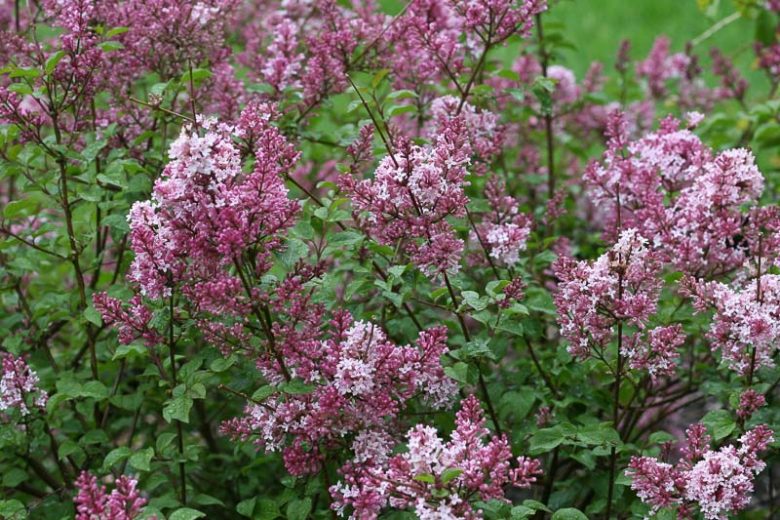
If you’re looking for something completely different in the lilac world, Scent and Sensibility Pink breaks the mold with its distinctive growth habit. This innovative variety features:
-
Spreading, low-growing form: Unlike typical upright lilacs, it spreads wider than tall
-
Soft pink flowers: Delicate pink blooms with the classic lilac fragrance
-
Exceptional reblooming: Produces flowers on new wood throughout the growing season
-
Versatile landscaping uses: Works as a specimen plant, in mixed borders, or even as a groundcover
-
Moderate growth rate: Forms a 2-3 foot tall by 4-5 foot wide mound at maturity
This adaptable variety performs well in USDA zones 3-7 and requires minimal pruning to maintain its natural form.
5. Proven Winners® Infinite Lilac (Syringa x ‘SMSXCV’)
Rounding out our list of exceptional reblooming lilacs is the newest introduction from Proven Winners—Infinite Lilac. This cutting-edge variety represents the next generation of reblooming technology with:
-
Remarkable reblooming strength: The most continuous blooming of any lilac to date
-
Rich purple-blue flowers: Classic lilac color with improved vibrancy
-
Superior heat tolerance: Performs well even in warmer regions (USDA zones 5-8)
-
Excellent disease resistance: Stays clean and attractive throughout the growing season
-
Medium size: Reaches 4-6 feet tall and wide at maturity
What makes Infinite Lilac particularly exciting is its improved performance in warmer regions where traditional lilacs often struggle. The extended bloom time combined with better heat tolerance makes this an excellent choice for gardeners in the southern edges of lilac territory.
How to Get the Most from Your Reblooming Lilacs
To maximize the performance of these extraordinary lilac varieties, follow these essential care tips:
Planting for Success
-
Location: Choose a spot with at least 6 hours of direct sunlight daily
-
Soil preparation: Lilacs prefer slightly alkaline soil (pH 6.5-7.5) with excellent drainage
-
Spacing: Allow adequate room for mature size (typically 4-6 feet apart)
-
Planting depth: Set plants at the same depth they were in their nursery containers
-
Initial watering: Water thoroughly after planting to help establish strong roots
Ongoing Care
-
Watering: Provide deep, occasional watering rather than frequent shallow irrigation
-
Fertilizing: Apply a balanced fertilizer formulated for flowering shrubs in early spring
-
Pruning: Deadhead spent blooms promptly after spring flowering to encourage reblooming
-
Mulching: Apply 2-3 inches of organic mulch around the base, keeping it away from stems
-
Winter protection: In colder regions, consider applying a layer of winter mulch for young plants
I’ve found that the single most important factor for encouraging strong reblooming is removing the spent spring flower clusters as soon as they fade. This quick maintenance task signals the plant to produce new flowering shoots rather than putting energy into seed production.
Common Questions About Reblooming Lilacs
How are reblooming lilacs different from traditional lilacs?
Traditional lilacs (Syringa vulgaris cultivars) bloom only once per year on old wood from the previous season. Reblooming lilacs have been specially bred to produce flowers on both old and new wood, allowing for multiple flowering cycles throughout the growing season.
Do reblooming lilacs need special care?
While the basic care requirements are similar to traditional lilacs, reblooming varieties benefit from prompt deadheading after their spring bloom and may appreciate a light feeding after the first flowering cycle to support continued bloom production.
When should I prune my reblooming lilacs?
Light pruning to remove spent blooms can be done immediately after flowering. More significant pruning for shape or size control should be done right after the spring bloom cycle finishes. Avoid late-summer or fall pruning, as this may remove the developing buds for next spring’s flowers.
Are reblooming lilacs fragrant?
Yes! Most reblooming lilacs retain the beloved sweet fragrance of traditional lilacs, though the intensity may vary by variety. Generally, the summer rebloom may have a slightly less intense scent than the spring display, but it’s still delightfully fragrant.
Can I grow reblooming lilacs in containers?
Many of the more compact reblooming varieties, like Bloomerang and Josee, perform quite well in containers, provided they have adequate drainage and sufficient root space. Choose a container at least 18-24 inches in diameter for best results.
Final Thoughts
The introduction of reblooming lilacs has truly revolutionized how we can enjoy these beloved flowering shrubs in our gardens. Instead of a fleeting spring romance, these innovative varieties offer a long-term relationship with waves of beautiful, fragrant blooms throughout the growing season.
Whether you’re looking to add just one standout specimen or planning to create an entire lilac hedge, these five exceptional reblooming varieties represent the best options available for 2025 gardens. Their combination of extended flowering periods, improved disease resistance, and adaptable growth habits make them valuable additions to landscapes of all sizes.
I encourage you to make space for at least one of these remarkable lilacs in your garden this year. The rewards of fragrant blooms extending from spring through late summer or fall will transform your outdoor space and provide months of enjoyment rather than just a few fleeting weeks.
Which of these beautiful reblooming lilacs are you most excited to try? I’d love to hear about your experiences with these extraordinary plants! If you’re looking for plants for your spring garden in 2025, try using the Easy Plant Finder tool, where you can find plants that fit your needs and growing conditions. Happy planting!

